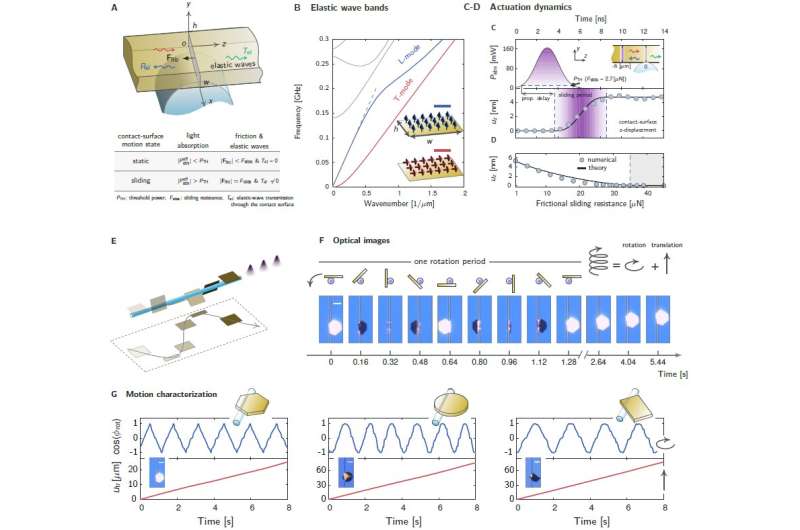Micro-scale opto-thermo-mechanical actuation in the dry adhesive regime

Realizing optical manipulation of micro-objects in nonliquid environments is challenging due to strong friction force (~µN) that makes optical force (~pN) insignificant. Towards this goal, scientists from Westlake University in China demonstrated spiral motions of microscopic objects on dry surfaces as driven by nanosecond laser pulses. They revealed the underlying mechanism relating to interactions between thermoelastic waves and friction force. The results pave the way for future development of microscopic actuators in non-liquid environments.
The key of the actuation lies in exploiting thermoelastic waves induced by pulsed optical absorption in absorptive micro-objects to overcome friction force.
In this paper, published in Light: Science & Applications, a theory that takes microscopic interactions between friction force and thermally excited elastic waves into account is formulated, which features a predictive equation for the threshold optical power required to overcome friction resistance. The researchers found that nanosecond pulsed optical absorption with mW-scale peak power is sufficient to tame µN-scale friction force and enable actuation. With new theoretical insights, they experimentally demonstrated two-dimensional spiral motion of gold plates on microfibers as driven by nanosecond laser pulses. In addition, it was discovered that the motion direction is controllable by mechanically adjusting relative positions and contact configurations between plates and microfibers, and the motion speed could be tuned by changing pulse repetition rates and pulse power.
Regarding the potential applications, the authors explained that "the proposed actuation scheme can in principle find practical applications in various fields that require to precisely manipulate micro-objects in non-liquid environments. For instance, integrating our technique with an on-chip waveguide coupled network, one can in principle achieve optical modulation by adjusting positions of a gold plate on top of the waveguide to control waveguide transmission via tuning coupling between nearby waveguides. Moreover, it can also be used for transporting dielectric particles attached to the surface of a gold plate along a micro-fiber/nano-wire, which is essential in lab-on-a-chip technologies, e.g., for life-science applications."
More information: Weiwei Tang et al, Micro-scale opto-thermo-mechanical actuation in the dry adhesive regime, Light: Science & Applications (2021). DOI: 10.1038/s41377-021-00622-6
Journal information: Light: Science & Applications
Provided by Chinese Academy of Sciences





















